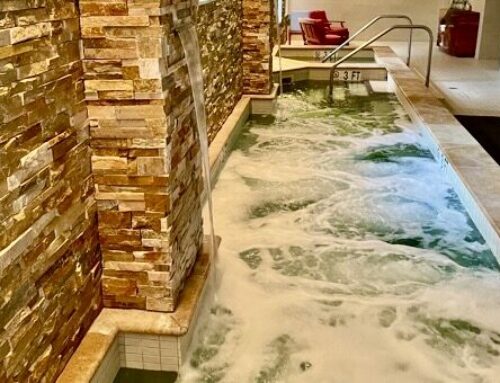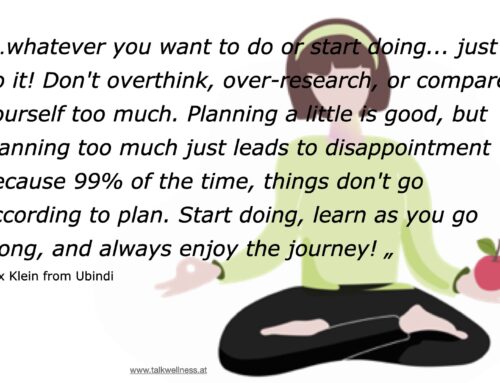In 2 steps to uncompromising quality in service management – Part 2
Step 2: The 10 most important factors to customer satisfaction in wellness services
In our first part we spoke about different attributes of services, how difficult the duplication of standards and quality is, as well as how people evaluate quality.
Let us quickly recap: Only if customer expectations are excelled, can customer satisfaction be generated sustainably.
It is now time to have a look at the 10 most important factors to customer satisfaction:
Factor 1: Keeping the promise to deliver
The service provider (i.e. the spa) must be able to deliver (for example offered treatments). This means the service provider has to ensure that all relevant aspects are prepared: staff, facilities, configuration, products, etc.
Factor 2: Intention of the service provider
If a spa offers a certain service, everyone involved has to show intention of providing the service. The succinct answer of a spa receptionist to the question of availability: “I am afraid I have nothing available” sounds in the customers’s ear like reluctance.
Factor 3: Competency of the service provider
If a spa offers “first class” treatments and facilities, the experience has to be first class to the customer: therapists have to be able to provide first class treatments and the facilities have to be of very high standards. The existing competence has to match the promise made.
Factor 4: Accessibility of provider
Older readers amongst you may still remember the times in the 1980s when it was near impossible to get a phone call through to customer services of a telephone company….
Accessibility today in the times of digital communication is a must. Through voicemail, email, contact forms, online booking, short messages and live chat, a provider can ensure non-stop accessibility.
My negative example: Until now you can still find Wellness Hotels, whereas it is not possible to receive a spa consultation or make a spa booking after closing time of the spa, lets say at 8 am. More than once I have been postponed by a hotel receptionist to please get back to the spa in the morning, when trying to book a massage after dinner for the next day.
Factor 5: Politeness, friendliness and appearance of staff
Sounds easy and common sense, yet it is not in reality! Beauticians do NOT look dressy in baggy Polo-Shirts, which have been made into uniforms in many Spas – from fitness instructor to life guard. Hair-dos that look like the person has been sleeping on them for 3 consecutive days do not make me confide in the beauticians competence when it comes to a beauty treatment. Friendliness and helpfulness have to be authentic, the co-worker has to be empowered to provide the customer with a sense of importance, that the guest’s needs are taken seriously and the staff have the time to look into those needs.
Factor 6: Customer oriented communication
Customers are grateful for good communication. Informing the customer well, and on an ongoing basis means integration, which again results in customer retention. Customer oriented communication has two options: the one-way street such as advertising, and the street with counter traffic: only in the second option is the true exchange of information possible. Recommendation Marketing becomes more and more popular in the Spa industry, such as working with Blogs, in which the blogger stays in direct communication and touch with his readers – essentially consumers.
Factor 7: Credibility and respectability of the service provider
Paper is lasting, and colourful brochures and pictures can promise a lot. It is not easy for the consumer to distinguish and choose the right wellness hotel, whilst all hotels rightfully sell themselves as offering tasty cuisine, friendly staff, a flashy spa area, comfortable rooms and a diversified activity program. Being able to detect nuances that may prove important in choosing the right destination only from a webpage, a brochure or a phone call is near impossible. Recommendations by other guests are useful, as are personal reports or evaluation platforms. However, real experiences and resulting positive evaluations can only be achieved by those who are serious and provide good ongoing service.
Factor 8: Physical and financial security
Whilst “financial security” makes common sense across the industry and overall (who does appreciate a service provider going bankrupt before performing the service entirely), the topic of “physical security” in a spa is highly important: damage due to inadequate treatment or insufficient facilities, burns, sexual harassment, and theft of guest property, all contribute to a feeling of insecurity for the guest.
Factor 9: Understanding and reacting to the customer and his individual needs
Listen! This is also the most important aspect in a sales conversation: Listen! And not only to be able to answer, but to truly understand! Additionally, staff has to be trained comprehensively, and be empowered to be able to react to guest’s individual needs.
Factor 10: Substantial surrogate and material
All resources such as tools, equipment, uniforms, furniture, decoration etc. are always being noticed by the guest and evaluated. Broken lamps, out-of-order steam rooms, rundown shower cubicles, stained towels and tattered reading material in the waiting area do have a negative impact on the overall satisfaction of the guest.
Keep at it!
Conclusion:
Not only for use in times of the football world cup, the motto always has to be: keep at the ball! Stagnancy means going backwards, and hence the constant drive for improvement of service quality are key for sustainable customer satisfaction and resulting customer loyalty!
Don’t miss our first part The 6 most important attributes of Wellness Services






